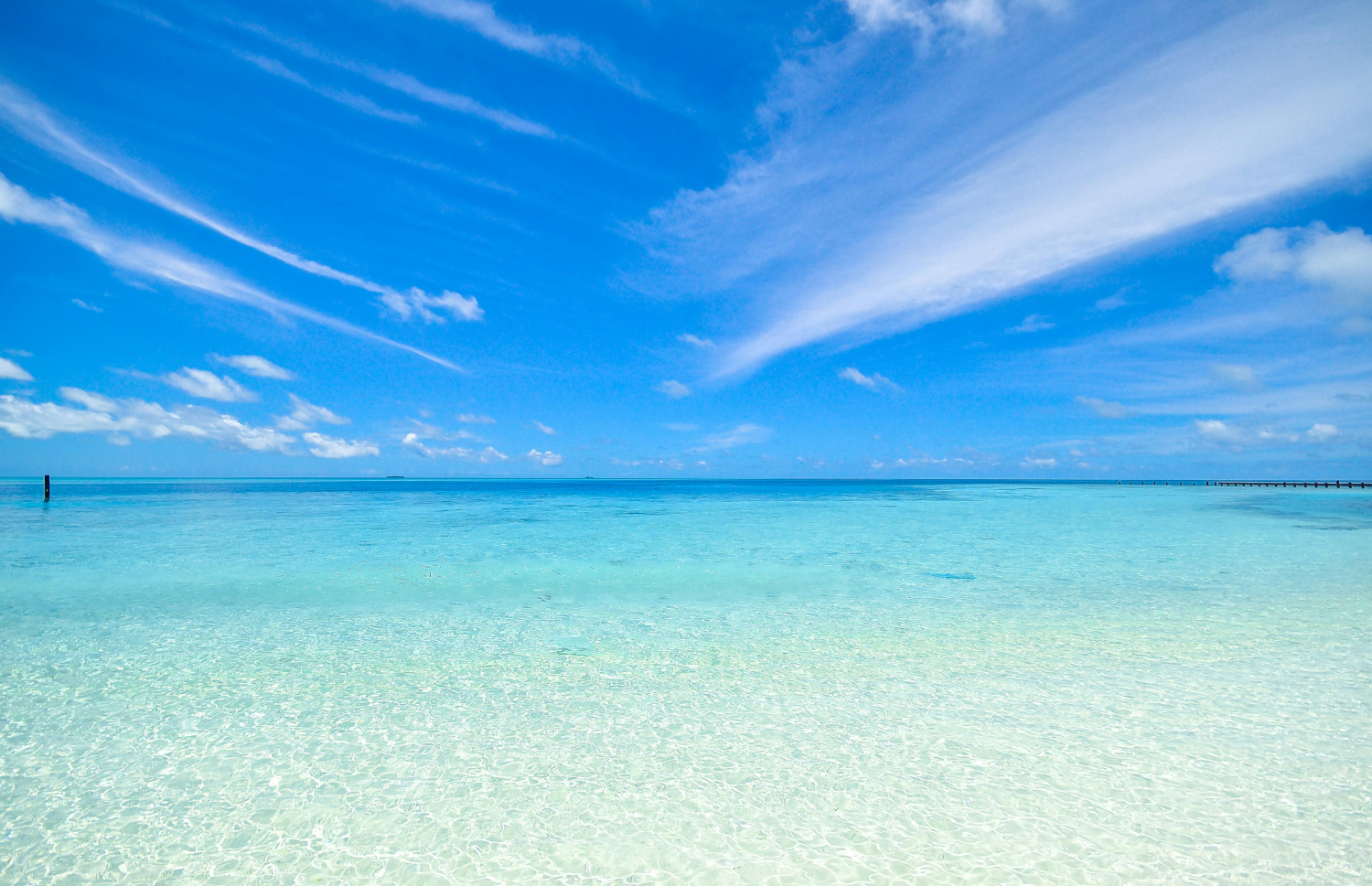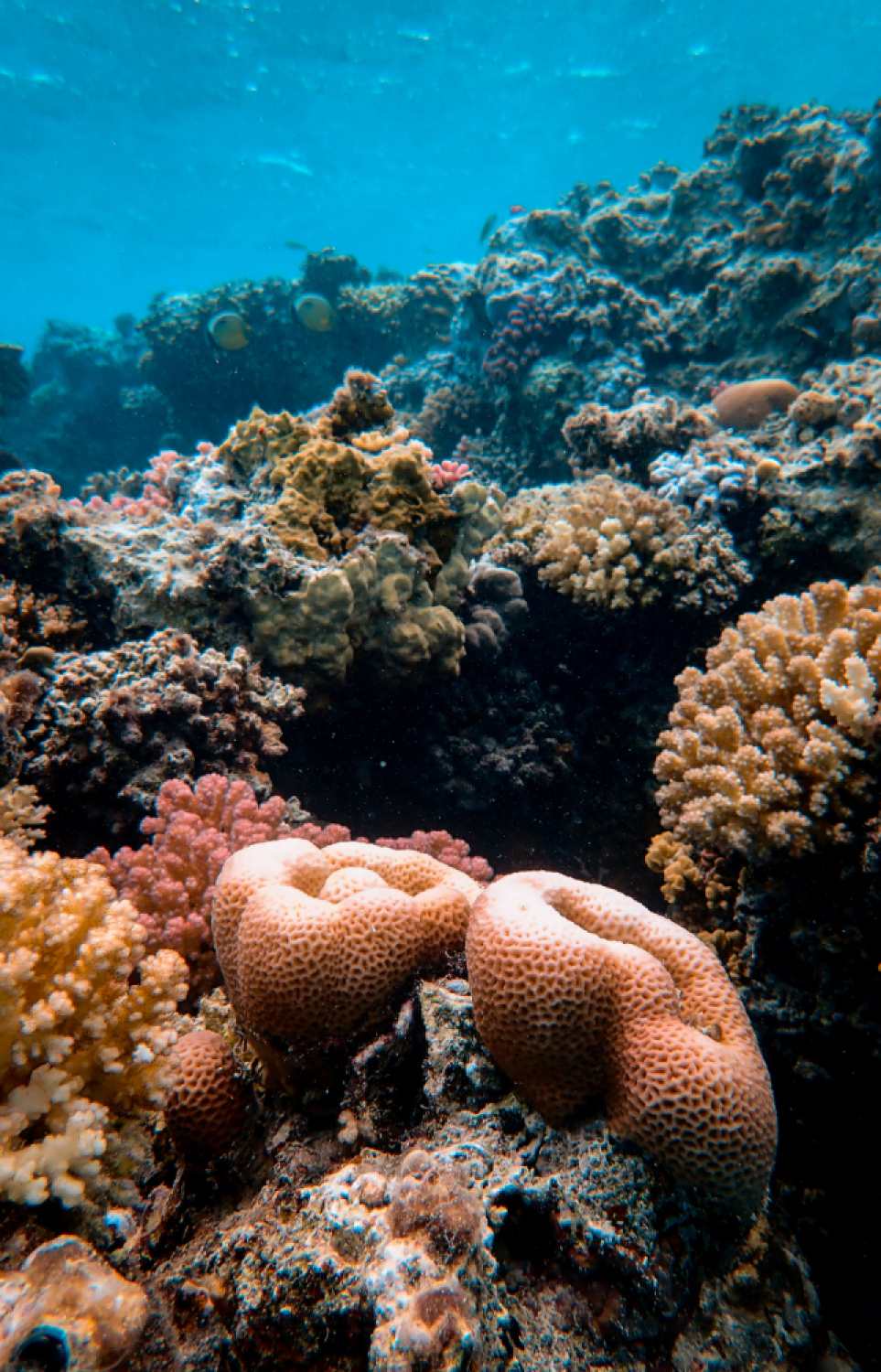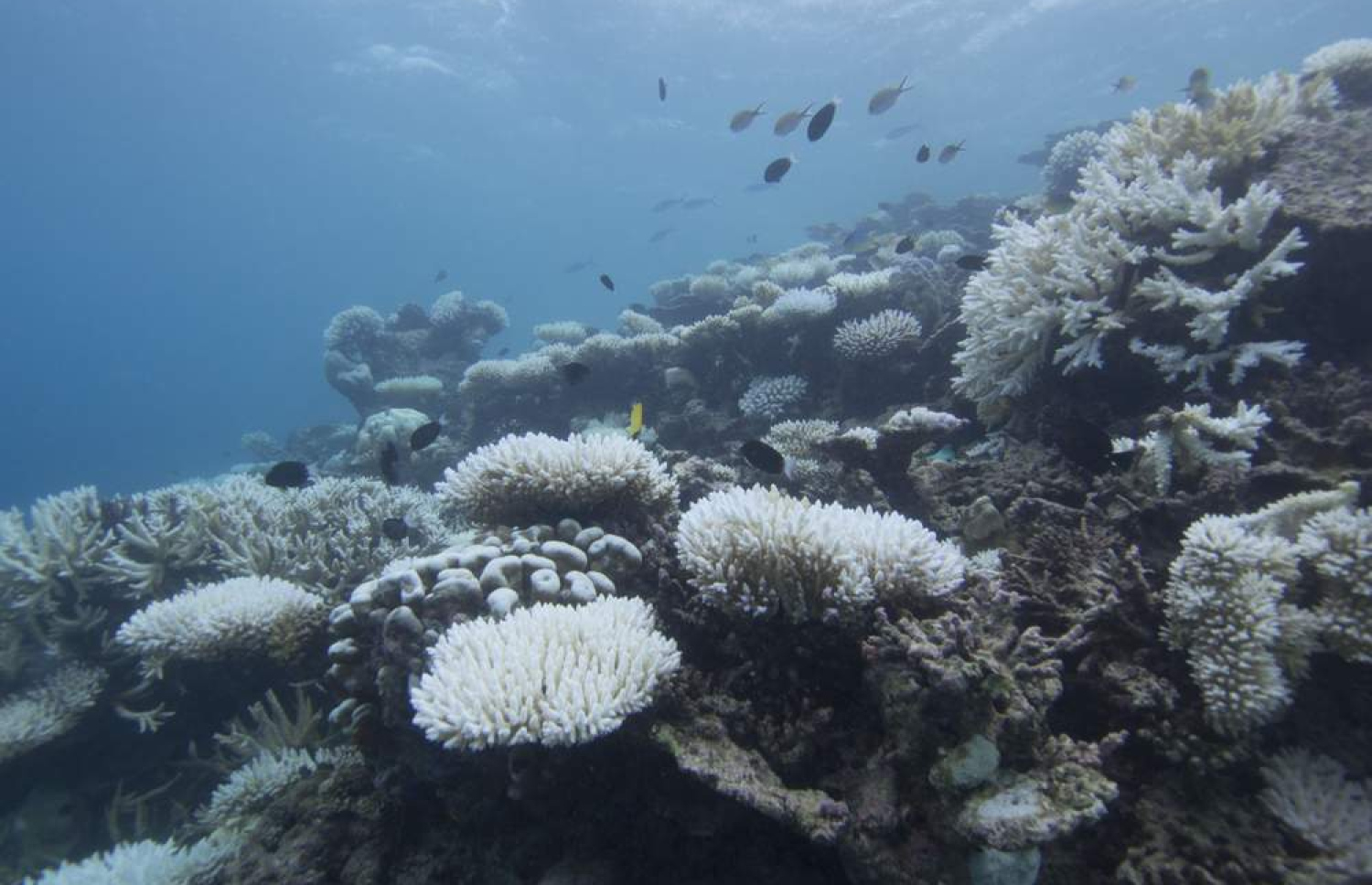The Maldives has been described as one of the premier tourist destinations in the world, and for good reason.
298 square kilometres (115 sq mi) of vivid island beauty are dotted across over 90,000 square kilometres (35,000 sq mi) in the Indian Ocean, each holding its own secrets to be uncovered. A sterling hospitality reputation is upheld by its people, even before its humble tourism beginnings in 1972.
But what really captivates those who live here and those who visit, are its waters.

Hues of jade and sapphire cascade over vast stretches at the top, with a deep cerulean in its deeper reaches. Delve into it and you will find magnificent fish, rainbow-esque coral reefs and a harmonious ecosystem that is nothing short of a miracle. Maldivian waters can be described as a dream for snorkelers and divers due to its extensive ecosystem and varied species of wildlife, such as:
- Approximately 1,100 epipelagic and demersal fish species of which include sharks
- 20 species of dolphins & whales
- Five species of marine turtles
- A majority of species being invertebrates:
- 400 mollusk species
- 120 copepod species
- 15 amphipods species
- 145 crab species
- 48 shrimp species
- 13 mangrove species
- 583 vascular plant species
- 2 endemic fruit bats species
- 170 bird species
While the above is true, it is also true that Maldives’ underwater ecosystem, particularly its coral reef ecosystem, is slowly descending into a state of peril.
A Look into the Maldives Coral Reef Ecosystem & How it Protects the Islands

Maldives is an island nation that comprises 1,192 islands, spread across 26 atolls. Just a few of these islands are inhabited, totaling 198, while the rest are used as resorts or are uninhabited. Every one of these islands have a coral reef system that serves to protect the island from incoming waves by absorbing its energy, stronger waves caused by storms and protects the coastline from flooding as well.
This in turn prevents the erosion of the shoreline, decreases loss of life and keeps property damage to a minimum.
Coral reefs are also known to house certain types of fish and serve as nests for growing fish and entire schools. The more fish there are in coral reefs, the better it is for the people that live on the respective islands. A healthy reef system equals a healthy helping of fish, which fishermen can catch as sustenance for both people and for the industry as well.
Maldives has up to 258 coral species residing in its waters, with 2,031 coral reefs to its name. The coral reefs of Maldives are known to be seventh in size compared to the rest of the globe. While Maldives islands have a total land area of 115.300 km2, coral reefs are known to be Maldives’ largest ecosystem, spanning an approximate area of 4,513 km2.
This is quite a large number and a large mass, making the reef system approximately 15 times larger than the land area, all the more important for an island nation such as Maldives.
The Health of the Reef & its Decay
Due to the staggering volume of the Maldivian reef, coral has been used as a primary building material in the Maldives for centuries. Coral mining reached its peak during the 1970s and 1980s, which had a significant negative impact on the reefs, resulting in coastal flooding. Other issues such as spikes in overfishing, sand mining and reef anchorage that damages the surrounding ecosystem has also contributed to reef decay.
All these issues combined creates a drop in species diversity and negative changes in topography, creating unconsolidated substrates that will lead to even more erosion. Unconsolidated substrates can be described as fragments that move around too much, which restricts ocean wildlife such as coral from latching on to a solid structure, leading to loss of colonisation and growth. This is why a lot of coral regrowth efforts utilize metal bars, metal nets and more as solid foundations for coral growth.
Land reclamation is also cited as an issue to the larger ecosystem, which is led by breakwaters, jetties and seawalls. These can be attributed to community expansion and houses being built closer to the shoreline.

Expansions have resulted in many artificial islands being made for the purpose of resort building. This alone brings about plastic pollution and various other contaminants.
Add the coral bleaching events of 1977, 1983, 1987, 1991, 1995, 1997, 1998 (of which over 98% of shallow water corals perished during an El Niño climate event, known to be one of the worst bleaching events in Maldives), 2016 and 2024 (with reported coral mortality rates reaching 60% to 100%) due to climate change and you get an ecosystem that has suffered quite a bit of damage. Rising sea temperatures can disrupt and even stop coral growth, with a minor change of just one to two degrees celsius being enough of a catalyst.
Steps Being Taken to Reduce and Reverse the Damage
The coral reef ecosystem is one of the most important parts of Maldives, playing its part in tourism, safety for people, as a thriving ecosystem for multiple forms of life in the water and more. And it is because of this that there are multiple efforts being undertaken to not only reduce the damage done to the reefs, but to reverse it as well.
1. ReefSeed: A Collaborative Effort from Maldives and Australia
ReefSeed is Maldives answer to reef restoration and is a pioneering effort that is being conducted collaboratively by Maldives and Australia.
ReefSeed is a portable reef aquaculture system, which comprises a container that holds a “coral aquaculture system capable of producing millions of coral larvae in remote regions all for reef restoration.” The container was made to increase the success of fertilisation and production of larvae while simultaneously reducing labour costs.
It was developed at the Australian Institute of Marine Science (AIMS) and their researchers. This portable system is one arm of the G20 Coral Research and Development Accelerator Programme, with the Maldives Marine Research Institute (MMRI) working alongside AIMS as an implementing partner. After the system was completed, AIMS researchers trained Maldives biologists as to how to operate the system without AIMS needing to be on-site.
Since then, MMRI have taken these devices to nine reef locations and nurtured more than 3 million larvae and have placed over 10,000 juvenile corals on 720 containers. This was done as a test at Maniyafushi and has proven the potential ReefSeed has to offer.
2. Coral Reef Insurance: A Financial Tool that Invests in Nature
This first-of-its-kind idea is being developed by the Maldives Monetary Authority and UNDP Maldives with AXA Climate as a technical partner. Conducting a feasibility study is their first step, with their publication titled: Feasibility Study of Scaling Coral Reef Insurance in the Maldives.
The study outlines their key goals such as protecting the coral reefs from damage from climate change that would heat up the waters. The study showcases how, via a triggering of extreme sea temperatures, a parametric insurance model may release rapid funding for the purposes of coral restoration.
It also touches on financial sustainability through a conservation trust fund, pathway implementation and stakeholder roles, creating a never-before-seen method to climate risk financing for vulnerable ecosystems.
3. Six Senses Laamu’s Maldives Underwater Initiative
Six Senses Laamu Maldives is a resort that opened in 2011, the very first in Laamu Atoll. Over the years they’ve served the Maldivian hospitality industry and have come to contribute to its environmental health.
The resort has a coral conservation program that has been ongoing for years now, with coral restoration being a vital part of their sustainability efforts. Their education and marine science research center SHELL (Sea Hub of Environmental Learning in Laamu) has been instrumental in their coral restoration efforts, with new methods such as coral micro-fragmentation from pioneer Dr. David Vaughan being utilised.
After the 2024 coral bleaching event left 75% of Maldives’ reefs in tatters, the MUI (Maldives Underwater Initiative) took their first steps in what can only be described as a bold step in environmentalism. Local marine biologist Mahil Ahmed or Coco along with a capable team put forth a plan that combines two major strategies: larval restoration and coral fragmentation.
Due to their efforts, 103 corals have been planted, along with 1,364 baby corals having been created by microfragmentation to this day, as per their Blue & Green Laamu June 2025 newsletter.
The MUI also conducted the Coral Nursery Project, a trial where they planted 180 Pocillopora and Acropora coral colonies on the house reef from their mid-water rope nurseries.
4. Maldives National Framework for Management of Protected & Conserved Areas
This is an ambitious initiative that is currently underway with the Maldives Ministry of Climate Change, Environment and Energy and the Government of Maldives partnering with the Ocean Country Partnership Programme (OCCP), led by the UK government. This five year (2024 - 2029) framework was funded with UK International Development.
During their first year, the OCCP conducted PAME (Protected Area Management Effectiveness) assessments at three varied marine sites, with the end goal being to highlight recommendations and key success factors that will help improve the management of each site, which were (as per the Maldives Protected Areas publication):
- The development of SMART (Specific, Measurable, Attainable, Relevant and Time Based) management plans.
- The development of Research and Monitoring Plans that are linked to the MPA management plan aims and objectives.
- Improved stakeholder engagement in MPA management.
- Improved awareness raising and communication around designated MPAs.
- Resource mobilization and exploration of new technology to support management and enforcement of PCAs (Protected and Conserved Areas).
This allowed the Framework to be developed with the most pertinent data possible, with it being flexible enough to be changed and adapted every five years so that the recommendations continue to be relevant and are in line with the purpose of the initiative.
Each PCA will be monitored with its own set of approaches and principles, allowing for specified steps to be taken for the protection of various wildlife, which includes fish, sharks, coral reefs and more. This extensive, informative and hopefully fruitful five year effort is a crucial step in the right direction for Maldivian environmentalism and will shape similar efforts in the coming years.
There are multiple other efforts being conducted within the Maldives and in the interest of time and keeping this piece as short as possible, let’s quickfire through the rest:
- Education and coral propagation: A lot of these efforts are being conducted by the government and via resorts as well, a lot of which have their own team of biologists to conduct research and help the environment.
- Resorts collaborating with environmental agencies: Resorts such as Atmosphere Core, Six Senses Laamu, Milaidhoo Island and more conduct reef conservation efforts, coral reef installations, protection of sea turtles and more with agencies such as the Olive Ridley Project, Blue Marine Foundation, Maldives Underwater Initiative, etc.
- Maldives National Coral Reef Initiative: A 22-year program run by the MMRI that monitors various coral reefs and their health in response to the mass bleaching event of 1998.
- Maldives Coral Restoration Program from Save the Beach Maldives: What started as a youth movement that pushed environmental efforts has blossomed into a multi-faced environmental organisation, with “restoring & rehabilitating degraded reefs in the Maldives to preserve the biodiversity and the future of our islands and oceans” being one of their main goals.
- Fulhadhoo Coral Restoration Project by the Maldives Coral Institute: A collaborative effort between the Maldives Coral Institute, Save the Beach Maldives, Maldives National University, Fehurihi Dive and Kamadhoo Dive, focusing on reef degradation caused by harbour construction.
- Future Climate Coral Bank: Supported by the Ocean Resilience Philanthropy Fund, funded by Deutsche Bank, this project will create a coral bank for research and is dedicated to coastal resilience and ocean conservation.
- Tourism Adaptation Project: A project executed by the Maldives Ministry of Tourism and the UNDP, focusing on supporting the tourism sector in addressing climate change risks, including coral reef and biodiversity protection.
- Reef Recharge Project: Ocean Dive Maldives and Taj Exotica Resort & Spa team up to increase coral coverage and encourage healthy growth through coral propagation.
- JOALI Reef Restoration Programme: Focusing on assisting the natural recovery of the reef through coral propagation and outplanting.
- Masmahaa-Veshi: An e-learning website that provides information and education about marine literacy.
- Mineral Accretion Technology: Low-voltage currents are used to speed up mineral formation, accelerate coral growth and increase the chances of survival.
Maldives and various international organizations are coming together to ensure the restoration and protection of coral reefs throughout the country in an effort to stave off past and possible environmental events that have proved harmful to its coral reefs. These organizations and initiatives provide a hope that is hard to extinguish and has the potential to carry the country to a better and brighter future.